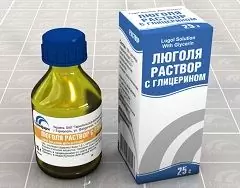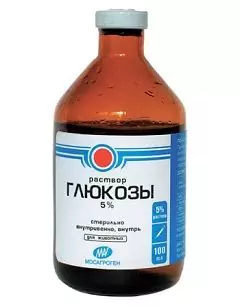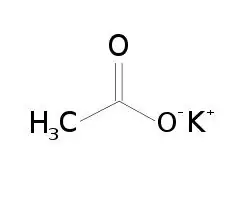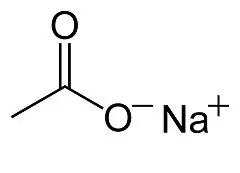Chlorhexidine bigluconate
Chlorhexidine bigluconate: instructions for use and reviews
- 1. Release form and composition
- 2. Pharmacological properties
- 3. Indications for use
- 4. Contraindications
- 5. Method of application and dosage
- 6. Side effects
- 7. Overdose
- 8. Special instructions
- 9. Application during pregnancy and lactation
- 10. Use in childhood
- 11. Drug interactions
- 12. Analogs
- 13. Terms and conditions of storage
- 14. Terms of dispensing from pharmacies
- 15. Reviews
- 16. Price in pharmacies
Latin name: Chlorhexidine bigluconate
ATX code: D.08. AC02, G.01. AX
Active ingredient: Chlorhexidine (Chlorhexidinum)
Producer: ROSBIO, LLC (Russia)
Description and photo update: 2018-26-10
Prices in pharmacies: from 20 rubles.
Buy

Chlorhexidine bigluconate is an antiseptic drug.
Release form and composition
Dosage forms of Chlorhexidine bigluconate release:
- solution for local and external use: slightly opalescent or transparent, slightly yellowish or colorless, odorless (in vials or jars with a dropper cap of 100 ml);
- solution for external use 0.05%: transparent or slightly opalescent, colorless, odorless (in bottles or cans of 100 ml).
Composition of 1000 ml solution for local or external use (0.2%, 0.5%, 1% or 5%, respectively):
- active substance: chlorhexidine bigluconate 20% - 10, 25, 50 or 250 ml;
- auxiliary component: purified water - up to 1000 ml.
Composition of 1000 ml solution for external use 0.05%:
- active substance: chlorhexidine solution 20% for the preparation of dosage forms - 2.5 ml (corresponds to the content of chlorhexidine bigluconate - 500 mg);
- auxiliary component: purified water - up to 1000 ml.
Pharmacological properties
Pharmacodynamics
Chlorhexidine bigluconate is a disinfectant and antiseptic. The drug against gram-positive and gram-negative bacteria exhibits both bactericidal and bacteriostatic effects, depending on the concentration used. Shows activity against pathogens of sexually transmitted infections (genital herpes, gardnerellosis), gram-positive and gram-negative bacteria (ureaplasmosis, chlamydia, trichomoniasis, gonococcus, treponema pale). Does not affect fungi, microbial spores, acid-fast forms of bacteria.
The drug is stable, after processing the skin (postoperative field, hands) remains on it in a small amount, sufficient for the manifestation of a bactericidal effect.
In the presence of various organic substances, secretions, pus and blood, it retains its activity (slightly reduced).
In rare cases, it causes skin and tissue irritation, allergic reactions. It does not have a damaging effect on objects made of metals, plastic and glass.
Pharmacokinetics
Characteristics of Chlorhexidine Bigluconate:
- absorption: practically not absorbed from the gastrointestinal tract; With max (maximum concentration in blood plasma) after accidental swallowing of 0.3 g of the agent is reached after 30 minutes and is 0.206 μg per 1 liter;
- excretion: 90% is excreted through the intestines, less than 1% is excreted by the kidneys.
Indications for use
Solution for local and external use 0.2%, solution for external use 0.05%
- genital herpes, syphilis, gonorrhea, trichomoniasis, ureaplasmosis, chlamydia (for the prevention of sexually transmitted infections; no later than 2 hours after intercourse);
- cracks, abrasions (for disinfecting the skin);
- infected burns, purulent wounds;
- fungal and bacterial diseases of the skin and mucous membranes of the genitourinary organs;
- alveolitis, periodontitis, aphthae, stomatitis, gingivitis (for irrigation and rinsing).
Solution for local and external use 0.5%
- wounds and burn surfaces (for treatment);
- infected scuffs, skin cracks and open mucous membranes (for processing);
- sterilization of medical instruments at 70 ° C;
- disinfection of working surfaces of equipment and devices, including thermometers, for which heat treatment is undesirable.
Solution for local and external use 1%
- disinfection of devices, working surfaces of medical equipment and thermometers, for which heat treatment is undesirable;
- treatment of the surgeon's hands and the operating field before surgery;
- disinfection of the skin;
- burn and postoperative wounds (for treatment).
Solution for local and external use 5%
The drug is used for the preparation of alcohol, glycerol and aqueous solutions with concentrations of 0.01–1%.
Contraindications
Absolute:
- dermatitis;
- allergic reactions (solution for external use 0.05%);
- individual intolerance to the components contained in the preparation.
Relative (diseases / conditions in the presence of which the appointment of Chlorhexidine bigluconate requires caution):
- childhood;
- pregnancy;
- lactation period.
Instructions for the use of Chlorhexidine bigluconate: method and dosage
Chlorhexidine bigluconate solution is used externally, topically.
Solution for local and external use 0.2%, solution for external use 0.05%
On the affected surface of the skin or mucous membranes of the oral cavity, urogenital organs, by means of irrigation or a tampon, apply 5-10 ml of the drug and leave for 1-3 minutes. Frequency rate of application - 2-3 times a day.
For the prevention of sexually transmitted diseases, the contents of the bottle are inserted through the nozzle into the vagina of women (5-10 ml) or into the urethra of men (2-3 ml), women (1-2 ml) for 2-3 minutes. It is recommended not to urinate for 2 hours after the procedure. Also, the drug should be used to treat the skin of the genitals, pubis, inner thighs.
Solution for local and external use 0.5%
5-10 ml of the preparation in the form of rinsing, applications or irrigation is applied to the affected surface of the skin or mucous membranes and left for 1-3 minutes. Frequency rate of application - 2-3 times a day.
Medical equipment and work surfaces are treated with a clean sponge moistened with the solution or by soaking.
Solution for local and external use 1%
The skin of postoperative wounds is treated with a solution using a clean swab.
Before treatment with the drug, the surgeon's hands are thoroughly washed with soap and wiped dry, after which they are washed with 20-30 ml of solution. Postoperative wounds are treated with a clean swab.
Work surfaces and a medical instrument are treated with a clean sponge moistened with a solution or by soaking.
Solution for local and external use 5%
Dilution of the concentrate is carried out based on the concentration of the prepared solution.
Side effects
During the period of application of Chlorhexidine bigluconate, it is possible to develop photosensitization, dermatitis, dry and itchy skin, and allergic reactions. In the treatment of pathologies of the oral cavity, taste disturbance, tartar deposition, and staining of tooth enamel are possible. After using the solution for 3-5 minutes, hand skin stickiness is possible.
Overdose
There are no data on chlorhexidine bigluconate overdose.
special instructions
If the solution gets on the mucous membranes of the eyes, immediately rinse them thoroughly with water.
It is important not to allow the drug to enter the wound with perforation of the tympanic membrane, spinal cord injuries, open traumatic brain injury.
It should be borne in mind that if hypochlorous bleaching agents get on fabrics that were previously in contact with preparations containing chlorhexidine, brown stains may appear on them.
The drug is used in a neutral environment; if the pH ranges from 5 to 8, the difference in activity is small; if pH> 8, a precipitate forms. The bactericidal properties of the drug are somewhat reduced by hard water, enhanced by an increase in temperature. Partial decomposition of the agent is observed at temperatures> 100 ° C.
Chlorhexidine bigluconate solution is not recommended for use in combination with iodine.
Application during pregnancy and lactation
Chlorhexidine bigluconate is used with caution during pregnancy and lactation.
Pediatric use
Chlorhexidine bigluconate is prescribed with caution to children.
Drug interactions
Chlorhexidine bigluconate is pharmaceutically incompatible with alkalis, soap and other anionic compounds (carboxymethylcellulose, gum arabic, colloids); compatible with products containing a cationic group (cetrimonium bromide, benzalkonium chloride).
Chlorhexidine bigluconate increases the sensitivity of bacteria to cephalosporins, neomycin, kanamycin, chloramphenicol. Ethanol enhances its effectiveness.
Analogs
Chlorhexidine bigluconate analogs are Chlorhexidine, Hexicon and Amident.
Terms and conditions of storage
Store in a place protected from light and moisture at temperatures up to 25 ° C. Keep out of the reach of children.
Shelf life is 2 years.
Terms of dispensing from pharmacies
Available without a prescription.
Reviews about Chlorhexidine Bigluconate
According to reviews, Chlorhexidine bigluconate is a drug with a pronounced antiseptic effect, rarely causing side effects. The drug is especially effective for rinsing the oral cavity, use in gynecology and dentistry.
Price for Chlorhexidine bigluconate in pharmacies
The approximate price of Chlorhexidine bigluconate solution of 0.05% (100 ml in a bottle) is from 10 to 18 rubles.
Chlorhexidine bigluconate: prices in online pharmacies
|
Drug name Price Pharmacy |
|
Chlorhexidine bigluconate skin antiseptic 0.05% disinfectant solution 100 ml 1 pc. RUB 20 Buy |
|
Chlorhexidine bigluconate 0.05% -f solution des. medium (skin antiseptic) fl. 100ml No. 1 RUB 75 Buy |
|
Chlorhexidine bigluconate 0.05% antimicrobial agent fl. 140ml 108 RUB Buy |
|
Chlorhexidine bigluconate 0.05% -YuzhPharm disinfectant (skin antiseptic) bottle 1l 229 r Buy |

Maria Kulkes Medical journalist About the author
Education: First Moscow State Medical University named after I. M. Sechenov, specialty "General Medicine".
Information about the drug is generalized, provided for informational purposes only and does not replace the official instructions. Self-medication is hazardous to health!






